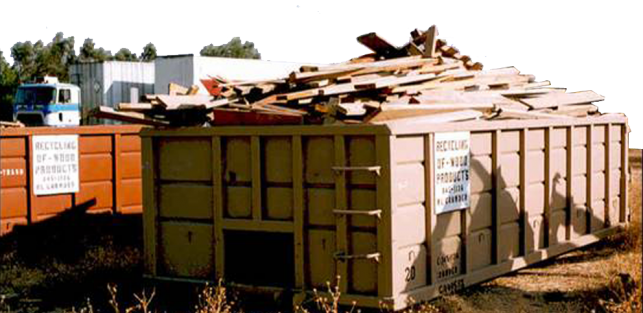Biomass Provides Solid Waste Reduction Benefits
Urban wood that has historically been landfilled consists of construction wood scraps, discarded pallets, clean wood material from manufacturing, and residues from tree trimmers and landscapers.

In fact, some 15 – 20 percent of the material traditionally sent to landfills in California is recoverable and usable urban wood. California’s pioneering 1989 solid waste reduction legislation, AB 939, mandated that 50 percent of the state’s solid waste that was then being landfilled should be diverted from landfill disposal. California’s fleet of biomass power generators has provided a key diversion outlet for the state to meet these goals. Biomass power generation diverts over 8 million tons of low value wood materials annually for fuel, and about 3.5 million tons of that is wood that would otherwise be disposed of in landfills.
Aside from the obvious need to reduce the amount of material going to limited landfill capacity in the state, landfill disposal of low value wood leads to a variety of adverse environmental impacts, including leachates that threaten groundwater quality, delayed stabilization of the fill, and emissions of odors, volatile organic compounds (VOCs), and greenhouse gases. Although emissions of carbon gases from a landfill are delayed compared with the case of energy production, because of the presence of CH4 in the landfill emissions within three to four years of the disposal of the material the atmospheric greenhouse gas burden exceeds that of the energy option, and grows to three times greater by the end of fifteen years, or 50% greater in the case of a controlled landfill.
Using solid-biomass wood residues for energy production avoids the negative impacts associated with landfilling this wood. Without the state’s biomass industry, many counties would be unable to meet their waste-reduction mandates.